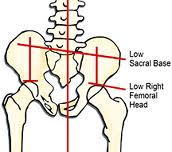In my Osteopathic and Physiotherapy practice there is probably few conditions that create as much confusion and misunderstanding as Osteoarthritis.
The most frequent are
- Its an inevitable part or aging
- Its wear and tear.
- The bone is on bone.
- Using it more makes it "wear out" more quickly
- Can,t be treated and have to live with it.
- Will only get worse with time.
- It will spread.
- Physical therapy - (Osteopathy/Physiotherapy) can,t help
- It will end in surgery.
The wear and tear myth
This is one of the most frequent explanations put forward to patients, often by GPs. "Normal wear and tear for age" is a commonly used phrase. Joints don,t in fact "wear out" and its not part of the normal aging process. Joints like to be used. The nutrition to the cartilage comes from the joint movement and compression. The ligaments and muscles get stronger with use - thus leading to a healthier joint.
What is Osteoarthritis
Traditionally Osteoarthritis is defined as a narrowing of the joint space due to thinning of cartilage. Though this is true and evident on X-Ray, it is only part of the picture.
Rather than seeing it as "wear and tear" process it is more helpful to view Osteoarthritis as an inflammation of the whole joint that involves the capsule and ligaments. The inflammation is the bodies repair process at work. Therefore the swollen joint is a sign your body is at work trying to repair itself - and not a bad sign in itself.
Its my Arthritis
People will often say to me "its my Arthritis" to cover all their musculo skeletal pains. However arthritic changes in a joints does not mean this is responsible for your symptoms. Sometimes it is a incidental finding and may have be present for many years before present symptoms. It is importance that X-rays and MRI are interpreted within the whole context of signs and symptoms.
Surgery
Osteoarthritis in joints don,t just get worse and worse ending in surgery. Quite often the symptoms can follow a fluctuating course, or even improve with the right treatment and management.
It is however true that joint replacement sometimes becomes the best option. This most frequently is the hip joint and also the knee. With joint replacements the better you go in the better you come out - so treatment, increased muscle strength and weight loss can all help if done prior to surgery.
Treatment of Osteoarthritis
Pain associated with Osteoarthritis usually responds well to physical therapy such as Osteopathy or Physiotherapy. As well as hands on treatment. it may include exercises, lifestyle and nutrition advice.





